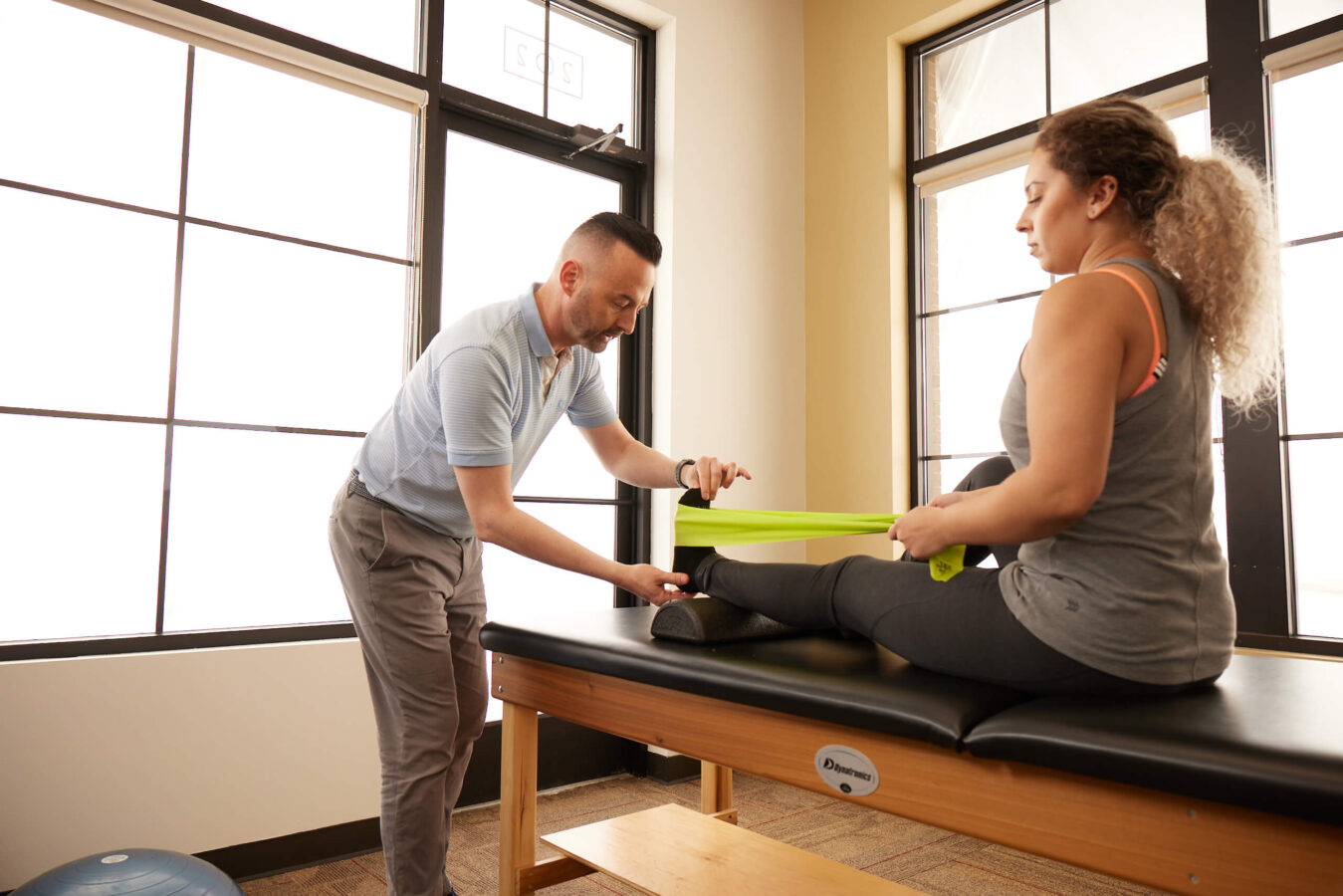
Musculoskeletal disorders are among the most debilitating and costly to treat. An estimated half of Americans over 18 will develop a long-term injury of the bones, joints, muscles, and connective tissues. These conditions can be painful and affect movement and quality of life.
But you don’t have to be hurt to benefit from physical therapy. Preventative physical therapy identifies and targets potential problems before they become chronic issues. This form of physical therapy helps people of all ages and activity levels build strength, mobility, and flexibility to lower the risk of injuries.
A proactive approach to prevent pain and injuries with physical therapy offers numerous benefits:
Mobility training with physical therapy improves durability in the joints and connective structures and corrects muscle imbalances, making the body less prone to injuries. When you have good mobility, you perform different movements efficiently and with control. You can move your body without forcing muscles to work beyond their range of capability.
You are more likely to get hurt if you don’t maintain good form when exercising, playing sports, or even getting up from the couch. Poor posture also leads to pain and stiffness because it causes undue strain on muscles and other tissues. Physical therapy promotes proper alignment and body mechanics to prevent sprains, strains, headaches, back problems, and other painful conditions.
One out of five falls results in a severe injury like a broken bone or head trauma. Older adults are especially vulnerable to falls and fall injuries because of the natural changes that often come with age: reduced vision, low body weakness, and balance challenges. According to the CDC, 3 million U.S. seniors are treated in emergency rooms yearly due to falls. Fall injuries also impact mobility and independence and increase the risk of re-injury.
Physical therapy treatments and therapies help clients lower their fall risk and build their confidence. Stretching and strengthening exercises help improve balance and stability. Vestibular treatment addresses all of the body systems involved in balance and orientation. Fall prevention physical therapy focuses on deficiencies in the sensory, vestibular, and visual systems that work together to maintain balance.
Preventative physical therapy is shown to reduce the risk of falls and fall injuries, but don’t take our word for it. The American Physical Therapy Association has compiled an extensive body of research confirming the benefits of PT for fall prevention.
Whether you’re a competitive athlete or work out and play sports to have fun and stay active, paying attention to the parts of your body that may be overworked or overstressed is essential. These areas are more prone to injury.
Physical therapy for injury prevention focuses on the specific demands of your sport or activity, targeting areas where damage is more likely to occur.
Common sports injuries include:
“Prehab” teaches proper form, posture, and mechanics to lower the risk of injuries. Targeted exercise and stretching keep athletes healthy and strong. Massage and other manual therapies release tight muscles and tissues and promote healing and recovery between training.
Physical therapy also helps patients improve their outcomes after surgery. Preventative care services give the body a “tune-up” so you can go into surgery with optimal endurance, stamina, and strength. That’s going to make the rehabilitation process smoother and more productive.
Other benefits of physical therapy before surgery include less pain after procedures, lowered risk of complications, and shorter hospital stays.
Physical therapists also help patients prepare mentally for their procedures by explaining what they can expect in the hours, days, and weeks after surgery. They educate clients on the importance of post-surgical physical therapy and track their progress toward their goals, supporting and motivating them every step of the way.
Regular physical activity helps prevent a wide range of chronic mental and physical conditions, including obesity, heart disease, type 2 diabetes, certain cancers, anxiety, and depression. The CDC recommends at least 150 minutes of moderate-intensity aerobic activity for adults each week and an hour daily for children ages six and up.
Physical therapy allows people with health challenges and physical limitations to exercise safely and enjoy all the benefits of physical fitness without aggravating symptoms or risking injury. To complement the hard work happening in the clinic, therapists prescribe home exercise programs (HEPs) for patients to follow between visits.
As we age, our bodies become more susceptible to disease and injuries. But that doesn’t mean you should stop exercising as you approach your golden years. Just the opposite is true. Moderate-intensity and vigorous exercise combat weakness, frailty, and other age-related changes.
Physical therapists prescribe safe, appropriate activities and movements to help patients feel and move well across their lifespan. When you are strong and flexible, you are less likely to get hurt and more likely to recover quickly if you are injured.
Education is another important aspect of preventative physical therapy. Trained and licensed physical therapists guide and support clients to help them make healthy lifestyle choices at every age and stage of life. These choices can help lower the risk of chronic illness, reduce injury risk, and allow adults to stay active and independent for as long as possible.
If you’re wondering whether preventative care is right for you, schedule an evaluation to discuss how this therapeutic intervention can benefit you. Find a physical therapy clinic near you.
External Sources: